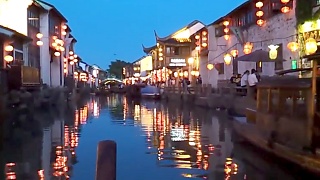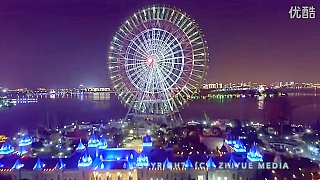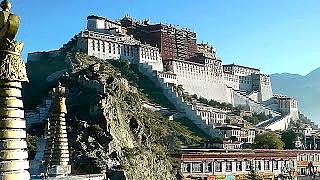
|
Huangshan, also known as the Yellow Mountains, is a renowned mountain range in southern Anhui Province. Famous for its stunning granite peaks, ancient pine trees, hot springs, and the mystical sea of clouds, Huangshan is a UNESCO World Heritage site and a popular destination for tourists and photographers. This guide provides an in-depth look at the best attractions, activities, and tips for visiting Huangshan.
Top Attractions
The Five Peaks of Huangshan
Huangshan features several notable peaks, each offering unique scenery and experiences:
Lotus Peak (Lianhua Peak): The highest peak at 1,864 meters, providing panoramic views and a challenging climb.
Bright Summit (Guangming Ding): Known for its breathtaking sunrise and sunset views.
Celestial Capital Peak (Tiandu Peak): Famous for its steep, narrow paths and stunning vistas.
Purple Cloud Peak (Ziyun Peak): Offers a unique perspective of the mountain range.
Beginning-to-Believe Peak (Shixin Peak): Known for its dense pine trees and excellent viewpoints.
Sea of Clouds
The Sea of Clouds is one of Huangshan's most spectacular phenomena. This natural wonder occurs when fog envelops the valleys and lower peaks, leaving the higher peaks to appear as islands floating in a white sea.
Hot Springs
The hot springs at the foot of Huangshan are famous for their therapeutic properties. The springs have been a popular attraction for centuries and provide a relaxing way to unwind after a day of hiking.
Pine Trees
The ancient pine trees of Huangshan are known for their unique shapes and resilience, often growing out of rocky crevices. The most famous of these is the Greeting Pine (Ying Ke Song), which appears to welcome visitors with its outstretched branches.
Flying-Over Rock
This balanced rock is perched precariously on a narrow ledge and is a popular spot for photography. The rock appears to defy gravity and offers incredible views of the surrounding peaks.
Geology of Huangshan
Huangshan's distinctive landscape is primarily composed of granite, which has been shaped by millions of years of geological activity. The mountain's sharp peaks, deep valleys, and unique rock formations are the result of tectonic uplift and erosion. The granite's resistance to weathering has created the dramatic, jagged peaks that characterize the region.
Touring Huangshan
Planning Your Visit
A visit to Huangshan typically takes two to three days to fully appreciate the main highlights. Here is a suggested itinerary:
Day 1: Arriving and Initial Exploration
Morning: Arrive at Huangshan and take the Yungu Cable Car to the top. Check into a mountain hotel to drop off your luggage.
Afternoon: Explore the Beginning-to-Believe Peak and enjoy the stunning views and unique pine trees.
Evening: Watch the sunset from Bright Summit.
Day 2: Main Peaks and Scenic Areas
Early Morning: Wake up early to catch the sunrise from Bright Summit.
Mid-Morning: Hike to Lotus Peak, the highest peak, for panoramic views.
Afternoon: Visit Flying-Over Rock and take in the stunning views of the sea of clouds if conditions are right.
Evening: Relax at the mountain hotel or explore more of the scenic spots at a leisurely pace.
Day 3: Descending and Hot Springs
Morning: Take the Yungu Cable Car down to the base of the mountain.
Mid-Morning: Visit the hot springs at the base of the mountain for a relaxing soak.
Afternoon: Explore the nearby ancient villages such as Hongcun or Xidi before departing.
Activities and Experiences
Hiking
Huangshan offers a variety of hiking trails ranging from easy walks to challenging climbs. The trails are well-marked and offer breathtaking views at every turn. Popular routes include the circular path that covers the major peaks and the hike from the base to the summit.
Photography
The dramatic landscapes of Huangshan provide endless opportunities for photography. Key spots include the Sea of Clouds, the unique pine trees, and the panoramic views from the peaks.
Local Cuisine
After a day of hiking, enjoy local Anhui cuisine, known for its use of fresh ingredients and rich flavors. Specialties include stinky tofu, mandarin fish, and bamboo shoots. There are several restaurants and food stalls at the base of the mountain and near the cable car stations.
Travel Tips
Best Time to Visit
The best times to visit Huangshan are spring (April to June) and autumn (September to November) when the weather is mild and the scenery is at its most vibrant. Summer can be hot and crowded, while winter offers fewer tourists and the chance to see the mountains covered in snow.
Getting There
Huangshan is accessible by train, bus, and air. The nearest city is Huangshan City (Tunxi), from where you can take a bus or taxi to the mountain. Huangshan Tunxi International Airport has flights from major Chinese cities, and the Huangshan North Railway Station is connected to the high-speed rail network.
Accommodation
Accommodation options range from budget hostels to mid-range hotels in Huangshan City and near the mountain. For a unique experience, consider staying overnight on the mountain in a guesthouse or hotel, which allows you to catch the sunrise and sunset from the peaks.
Tickets and Passes
Purchase entrance tickets at the mountain's gates. There are separate tickets for the cable cars and hot springs. Consider buying a multi-day pass if you plan to explore all the main peaks and scenic areas.
Guides and Tours
Hiring a local guide can enhance your experience by providing insights into the mountain's history, culture, and geology. Many tour operators offer packages that include transportation, tickets, and guided tours.
|

 Tiger Hill, SuZhou 苏州
Tiger Hill, SuZhou 苏州

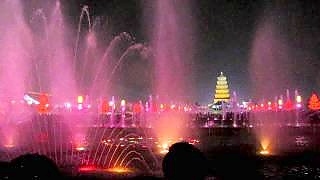

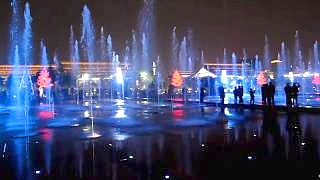


![The first film is from the CCTV Spring Festival Gala 2013, with singer Na Ying. The song : [Because of You, My Life is] A Warm Spring With Blooming Flowers. In 2015, the Spring Festival (Chinese New Year) runs from the 19th to the 25th February. The second is from China`s National Games Opening Ceremony in 2009. The song is Like A Dream. The third film features the music `Legend of Chinese Mountains` and is about the five sacred mountains of China and the Chinese love of nature and balance with nature. Fourth is `Your Collar`, a romantic song from the imperial music of the Han Dynasty. Fifth song is `A Nation of Greatness and Courtesy` and is about the Chinese character of virtue and friendship. Greatness in Chinese thinking is virtue; all three core Chinese philosophies - Taoism, Buddhism and Confucianism - stress that strength and happiness (well-being) lies in balance, not power (dominance). The last film features music from a documentary about the DaMing Palace (DaMing Gong) of the Tang Dynasty, at the heart of the dynasty`s capital Chang`An (which means `eternal peace`). The palace area is a little north east of the city of Xi`An in ShaanXi province. A selection of traditional Chinese music and song ...](https://img.youtube.com/vi/UP5CvZlNOKI/mqdefault.jpg)

